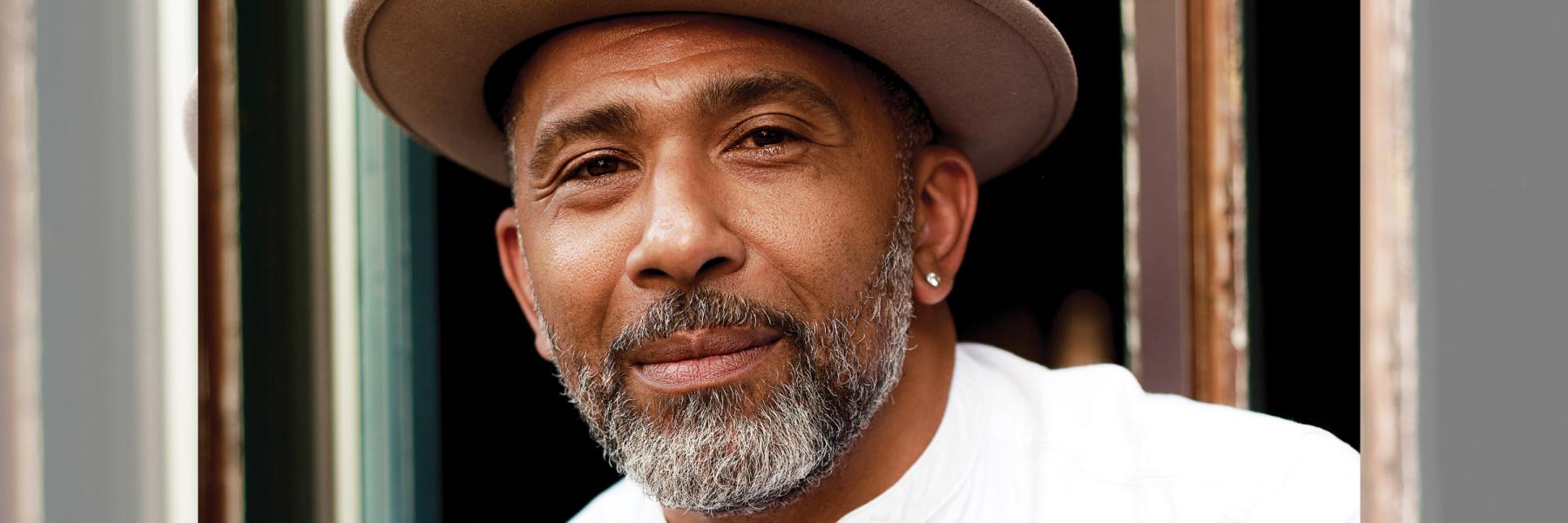
It’s significant that CROI 2022 started and ended with HIV and aging, because it emphasizes the increasing amount of interest and research being devoted to the topic. Marc Thompson, the co-founder of PrEPster.info and a long-term survivor of HIV, has been at the forefront of HIV activism and prevention in the U.K. for over 30 years. He opened the conference with the Martin Delaney Memorial Lecture, “We’re Still Here: HIV, Aging, and the Invisible Generation.”
In his talk, Thompson shared his personal story of survival along with universal themes that people living and aging with HIV experience. “There is one universal truth,” says Thompson. “One thing that all of us who are here today share—we’re all aging. We can’t escape it. It’s a process and a journey that is inevitable. But for those of us who have HIV, there are many added layers and dimensions to consider.”
He then outlined what he identifies as the key issues facing people living and aging with HIV:
- The impact of HIV on aging. “What does it mean to be living with HIV across a lifetime, to our bodies, to our minds, to our emotional state, to the way that we socialize and engage with the world?”
- The threats to continuity of care. “The success of effective antiretroviral therapy has changed HIV from where it was many years ago…Sadly, care outside of specialized HIV care is often not equipped to manage the issues connected with HIV.”
- Experiencing co-morbidity and several non-HIV related conditions. “We don’t fully understand the impact of HIV on non-HIV conditions, particularly cardiovascular disease and diabetes. Plus, we now have to deal with the challenges of managing care with multiple doctors and other providers.”
- Polypharmacy issues. “This includes the interaction between HIV medications and medication for non-HIV related conditions.”
- The increased need for support services. “Is it time to rethink the need for the provision of community-based services for older people living with HIV?”
- Persistent loneliness and isolation. “We have enough evidence that tell us that people with HIV already experience loneliness and isolation. In a world where old age already renders you invisible, this will only increase.”
- Heightened concerns about stigma and discrimination. “HIV stigma is not a one size fits all. We need an intersectional response, one that looks at HIV stigma through the lens of race, gender, sexuality, and in this context, age.”
- Quality of life and aging well. “It’s not enough for us just to be grateful that we are still here.”
Says Thompson, “After decades of surviving, we want to continue to survive, but we also want to thrive.”
* * *
On the last day of the conference there was a highly-anticipated symposium on HIV and aging moderated by Peter Hunt, of the University of California, San Francisco.
Mark Siedner, Harvard Medical School, gave a great overview and global perspective on aging and comorbidities with HIV. Nicholas Funderburg, The Ohio State University, discussed some of the potential and underlying biologic mechanisms that influence inflammation and promote age-related comorbidities in PLWH. And a presentation by Kristine Erlandson, University of Colorado, looked at ways that we might integrate frailty and functional outcomes into clinical trials and in the clinic. Erlandson notes that it’s important to find people early to be able to treat frailty.
The presentations were followed by a panel discussion which opened with two amazing HIV community advocates, Jules Levin of NATAP in New York City, and Venita Ray from Houston, with Positive Women’s Network-USA.
Levin said that when he started focusing on aging and HIV 16 years ago, he anticipated that we would have a problem, but that it’s actually much worse than he ever thought it would be. “We have a broken HIV healthcare system, despite spending $1 billion in the Ryan White Care Act and tens of millions of dollars for Medicaid and Medicare. Something has to change.” He also outlined what he thinks needs to happen to advance the research and improve care.
Speaking out
Venita Ray eloquently and emotionally described her experience as a 63-year-old Black woman in the South who never expected to be aging with HIV. “As I was writing out my talking points today, I’m not going to cover the scientific. I think you heard it. I was in tears and I’m emotional now. Because while the rest of the world is telling us about our life expectancy being the same as our peers who are not living with HIV, we know it is not the case. It is not the case.
“There’s a real concern in the HIV community about issues related to aging. We know that already almost 50% of us are over 50. We’re grateful to be living longer, but we’re not prepared for the other conditions that are coming with it. We weren’t prepared to be living, going through this. I remember going through menopause a few years ago and my ID doctor—no one could give me information about the impact of menopause and my medicine and things—and it was very frustrating to know what to do.
“There is historical distrust and disconnect between the science, the researchers, and our community. We often feel that we’re treated as subjects—widgets—but not people. We often feel like the humanity is lost when you are talking to us, that there’s a lack of meaningful inclusion into what our real daily lives look like.”
Ray stated that the vulnerabilities to HIV acquisition are rooted in race and racism, and that CDC (U.S. Centers for Disease Control and Prevention) and others have talked about how systemic racism is a public health issue. “But yet we use terms like social determinants of health, to not mention the words race and racism, right? We know that the data shows it is not just about behavior. It is not about black condomless sex. It is about the systemic conditions that make us vulnerable in the first place, that are rooted in poverty.
“I live in the South. We’re dealing with rural communities, intersectional stigma, and I want you to remember that intersectional stigma is about the multiplicity of stigmas that we live with—homophobia, transphobia, being Black in the South, mass incarceration. There is still huge stigma. Never mind that those of us aging, feeling isolated, with not preparing to be here because we did not expect to be here. So, it is frustrating for some of us that the same system that made us vulnerable for acquisition is the same system that is not calling out what is really needed—addressing the root causes that created the vulnerability in the first place.
“Black women bear a higher burden of acquisition. We represent 60% of all women living with HIV in the epidemic, and when you ask why, using references to ‘we don’t take care of ourselves’ or that ‘down-low brother’ and all of this, versus that intersection of race and gender, that we live with the gender inequities, the pay gap, all of those things that prey on Black women that don’t persist anywhere else—we are not talking about dealing with any of that. We want to talk about how many pills we can get into us, and we want to study us and use nice terms instead of getting at the solution and calling it what it is, the South is the epicenter…
“What we want is an ongoing partnership with researchers in ways that include us from the beginning, and not just as test subjects. We think research can be enhanced with our contribution. It has been talked about by us, but it’s not being talked about with y’all, and I know you all are working with other people. But chances are, if it’s in the U.S. and I don’t know about it, it probably ain’t happening.
This should be a beautiful time in our lives but for many of us it is not.
“And we do have some women that are working around aging and HIV, but we are not connected. We are not influencing what happens. So, we need you all to come out of your scientific bubbles and have those uncomfortable conversations with us about intersectional stigma, about what’s really going on about weight gain. My breast size has tripled in the last three years. And when I mentioned it, there was no concern because you know, that’s just a part of it. When the side effects get to be too much and we stop taking our medication, then folks use terms for us like falling out of care, not being adherent, and compliance, which are not terms used on any other disease state other than HIV. They’re stigmatizing, they’re disempowering.
“So, we appreciate the opportunity to be here today to talk with you, and I talked with a lot of people before I came to talk with you all today, and my job is to represent them in my discussion. I’m a Black woman, I’m a grandmother, I’m all of these things—and community. I’m an attorney by training, but my training didn’t prepare me for living with HIV. It didn’t prepare me for the stigma and the shame that came with it, it didn’t prepare me to be dehumanized in the way that we’re talked about, in language that is blaming and shaming for our own diagnosis or oppression.
“We experience both the fear of dying and the fear of living every day. This should be a beautiful time in our lives, but for many of us it is not. There is a lot of fear and anxiety, even with the joy of seeing my great nephew born last April, and I’m delighted to be here with him. I say to you all I appreciate the opportunity to speak. Five minutes is not enough for me to tell you what this is like. And to know in the last couple years, I can’t even count the number of folks that have died. Last year two of our founders passed away of HIV-related complications, renal failure—
it is just on and on.
“We need you to partner with us, we need you to help us help you with answers. We need you to help us make things happen for us on the ground, not in the research bubble. We are living this now. And we invite you to join us.”
EDITOR’S NOTE: All government-funded HIV research around the globe includes community-based advisory boards. If you are interested in providing feedback to HIV researchers, check out your local research group if you have one. ACTG (AIDS Clinical Trials Group) and HPTN (HIV Prevention Trials Network) are just two groups working across the U.S. and around the world.


